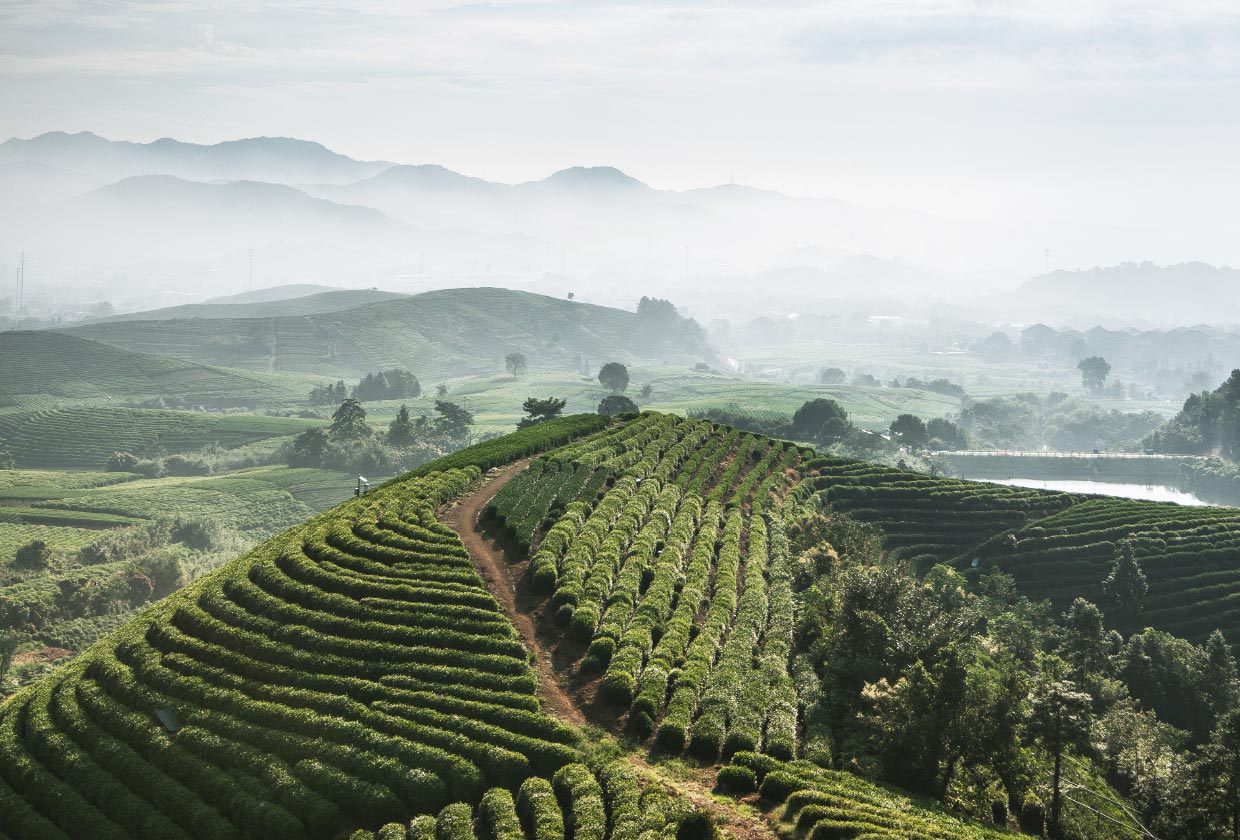We caught up with CEO Dr. Bertram Kandziora to talk about the strategy behind STIHL’s international production network, the unusual 2020 fiscal year, and the challenges to come in the next few years.
Good strategies
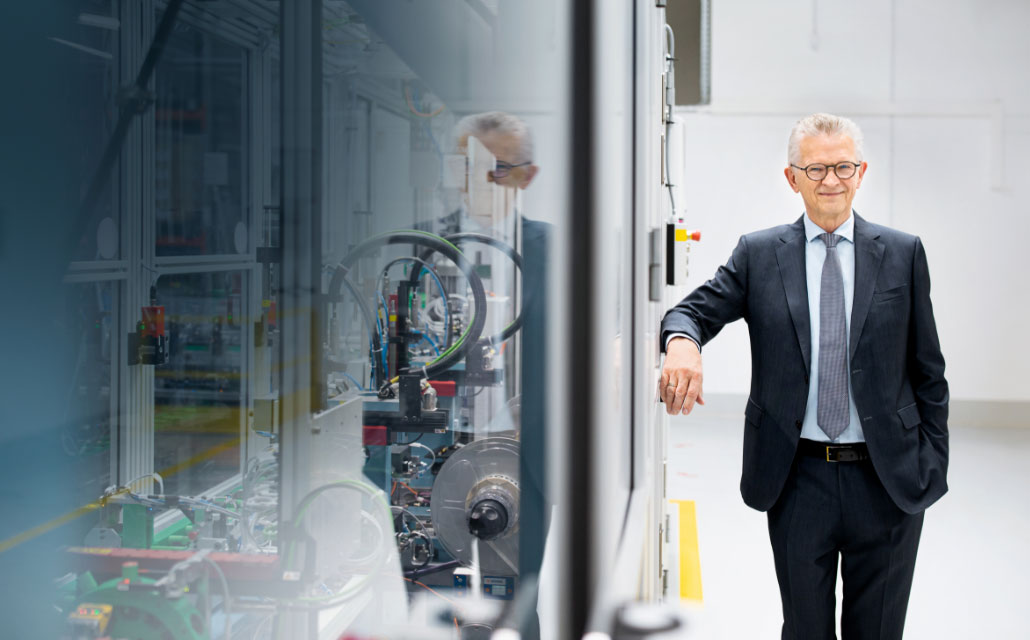
We met STIHL CEO Dr. Bertram Kandziora in Waiblingen at the founding company’s new, in-house battery pack production facility. While 2020 was an unusual fiscal year, with many unique challenges, the next few years also pose particular strategic challenges for the business.
Dr. Kandziora, the STIHL Group has an international production network. How did this come about, and what are its components?
Dr. Bertram Kandziora Starting an international production alliance was one of the fundamental decisions made by the Stihl family early on. STIHL products were being marketed in other countries as far back as the early 1930s, and the first international STIHL company was founded in Austria in 1966. The international production alliance was launched after that, in 1973. Not long afterward, the STIHL production companies in Brazil, Switzerland, and the United States were founded, adding to the production capability in Germany. Today, we also have STIHL production companies in Austria and Asia. The latest member of the alliance is our in-house battery pack production site at the founding company in Waiblingen. It’s the first step toward greater vertical integration in this highly promising segment.
What were the strategic factors involved in this decision?
Dr. Bertram Kandziora There are always a number of things to think about when developing new manufacturing capabilities. Production should take place as close to the market and customers as possible, since that reduces time to market and lowers carbon emissions. But having a local presence in too many of the more than 160 countries where STIHL products are marketed doesn’t make sense. After all, it’s important to hit the right price points in each market, so the costs have to work out. One way to reach your cost targets is by consolidating volume at certain production sites. Our international production alliance lets us combine market proximity with the benefits of scale. Each assembly site supplies products for its own continent and for worldwide distribution. Aside from that, having our own manufacturing brings advantages in know-how, flexibility, and independence from third parties.
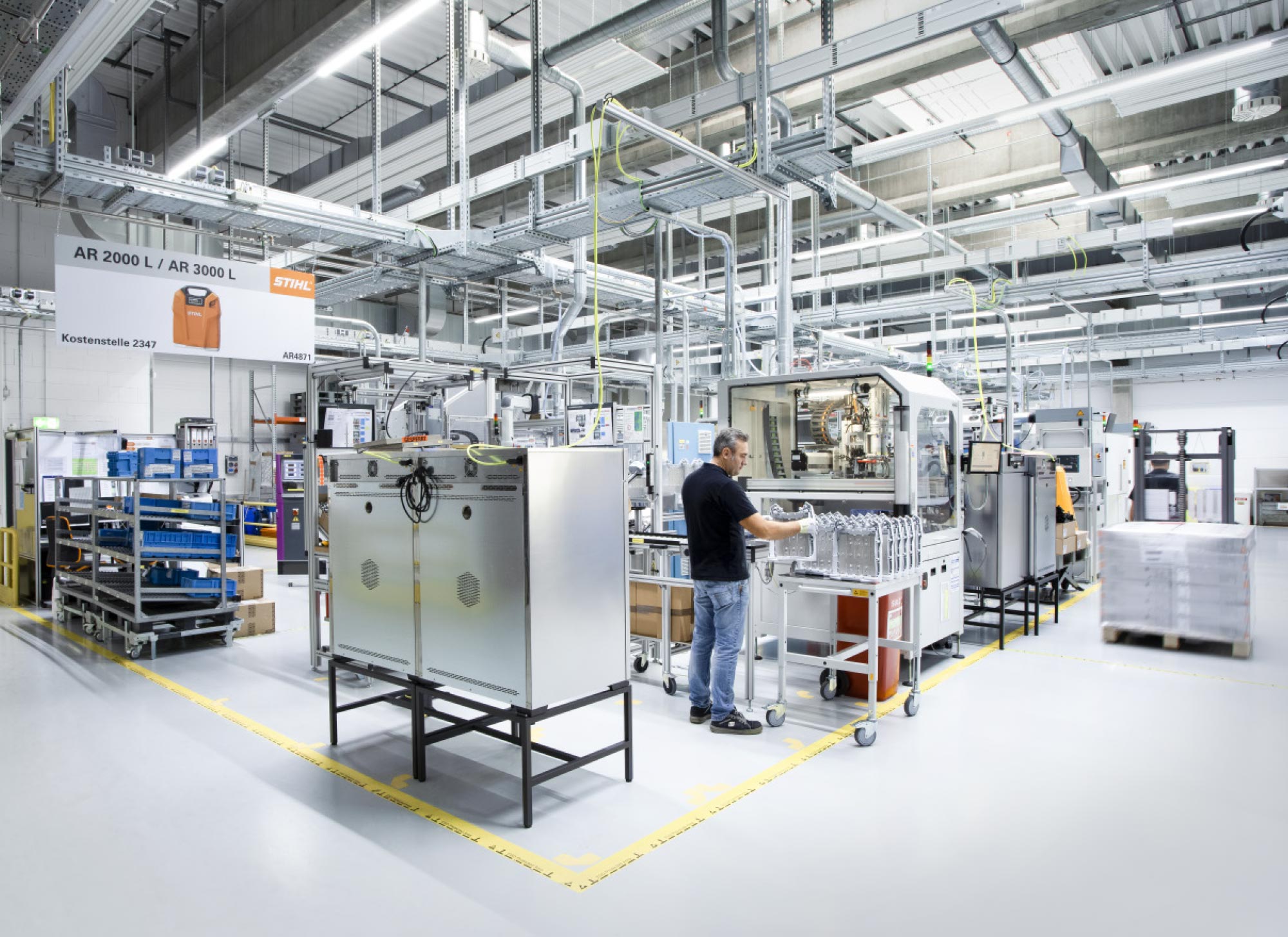
Was the strategic decision in favor of the international production network the most important one in STIHL’s history?
Dr. Bertram Kandziora No, that was Andreas Stihl’s decision to bring the saw to the tree, thereby laying the foundations for STIHL’s success. The second generation’s decisions to focus on dealers that provide service, push for independence from banks, and concentrate primarily on organic growth are comparable in scope to the decision to maintain an international production alliance. The more recent decision to really ramp up investment in the battery-powered product segment is also crucial to the future of STIHL.
The 2020 fiscal year was like no other. The coronavirus pandemic swept the entire world, and supply chains started to wobble. Wasn’t the global nature of STIHL’s production operations an obstacle under the circumstances?
Dr. Bertram Kandziora No, not at all. It let us respond quickly. For example, it turned out to be a big plus that we had decided in 2013 to replace the existing ZAMA plant in Shenzhen, China, with one in the Philippines and one in Huizhou, China. During the pandemic, the plant in the Philippines helped to make up for the fact that the Chinese plant was shut down at first. Later on, when the virus hit the Philippines, the Chinese plant was back up and running. That meant we were able to avoid downtime at our assembly plants due to a shortage of carburetors. In general, our production alliance and the high flexibility we have at all our locations saved us from experiencing any noteworthy stoppages.
Vertical integration at STIHL
compared to other industries
More than
STIHL
Approx.
Mechanical engineering
Approx.
Automotive engineering
Source: German Federal Statistical Office (2019), STIHL
»Our production alliance lets us combine market proximity with the benefits of scale.«
Dr. Bertram Kandziora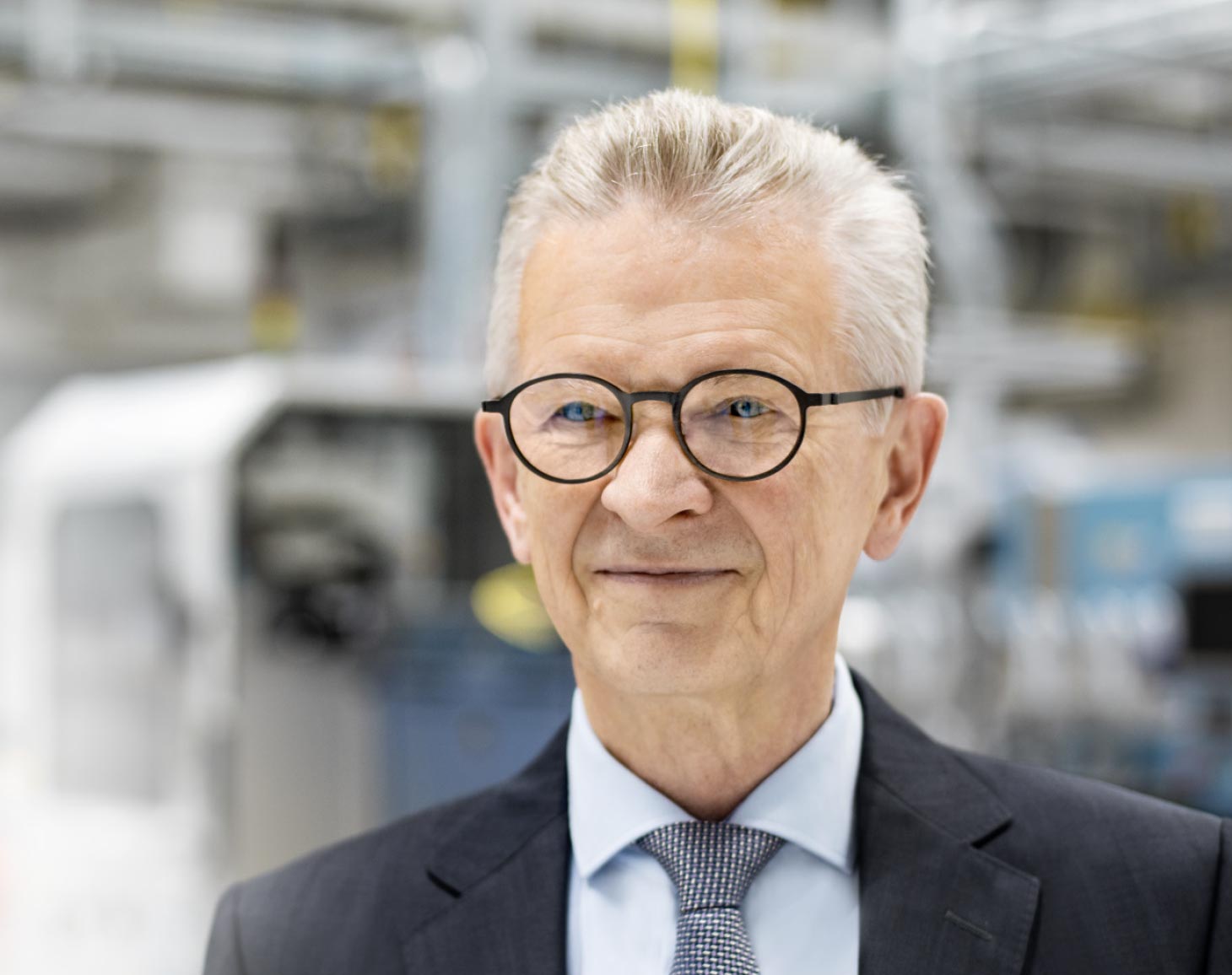
Amid the pandemic, there have been increasing calls to bring production back to Germany.
Dr. Bertram Kandziora The German economy is heavily export-oriented, and we market as much as 90 percent of our products in other countries. Dramatically expanding production in Germany doesn’t fit with that alignment.
STIHL is one of the few businesses to have gotten through the coronavirus pandemic without cutting working hours so far. What was the strategy for coping with the new overall conditions?
Dr. Bertram Kandziora Employee health is paramount in times like these. Right from the start, our primary goal was to make sure the risk of infection at work was as low as possible for all our employees, lower than in public life. We managed to do so. Our international response teams worked with the authorities across the globe to quickly implement protective measures. The unit sales forecasts were really grim in the spring, and our supply chains were stretched extremely thin. So we asked ourselves whether we should proactively scale back production. Ultimately, we decided to keep producing at high levels so that the products customers wanted would be available at all times. We even supported our dealers in this unusual situation by extending our payment terms in certain circumstances. Due to the solid financial structure of STIHL that we have built over the decades, we were able to risk high inventory levels and changes to standard payment terms. This turned out to be the right strategy, since business really picked up starting in May. In Germany, we even had to add shifts on Sundays instead of cutting working hours, which we had been prepared to do.
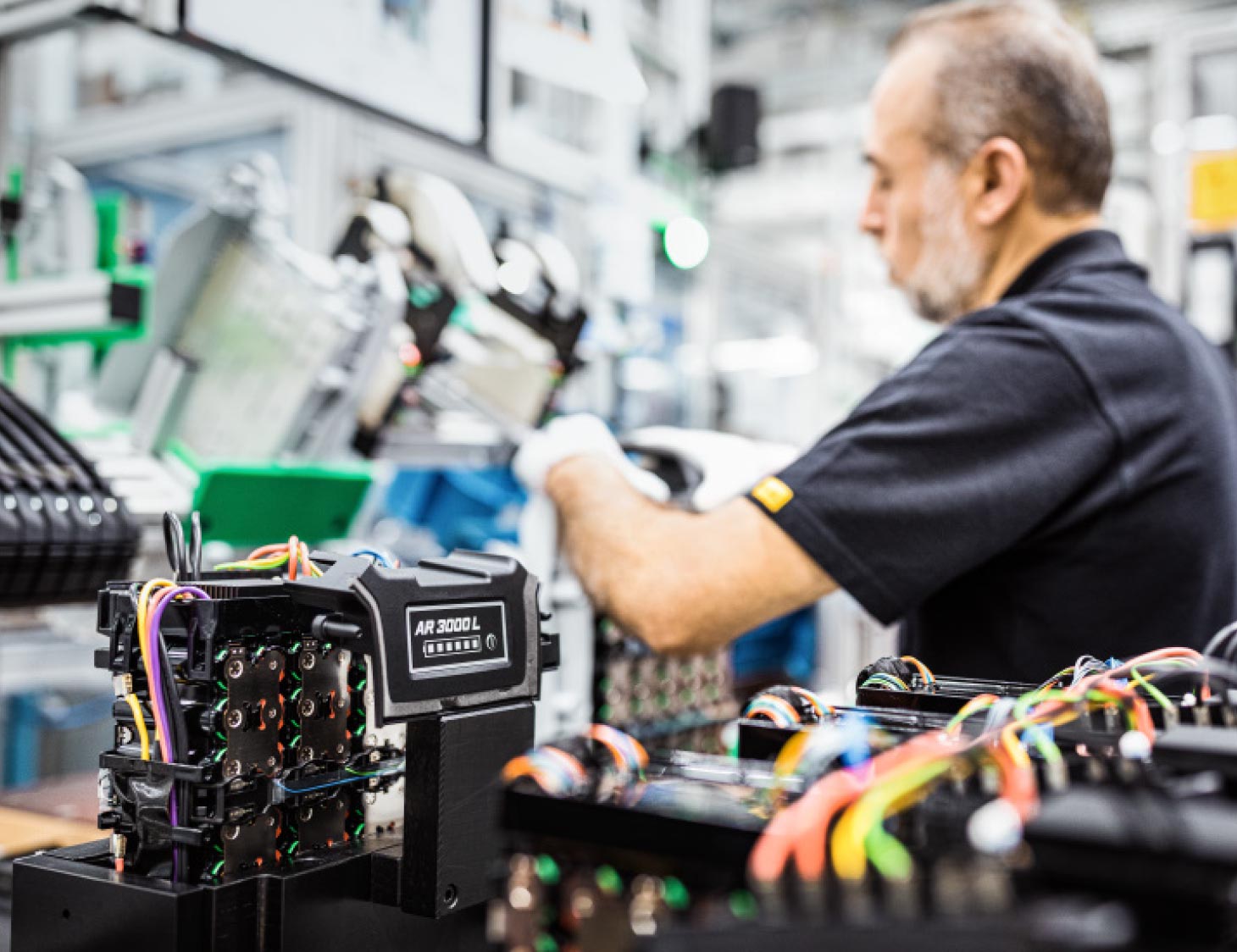
But that alone doesn’t explain STIHL’s growth.
Dr. Bertram Kandziora Customers, whether they are professionals or private users, typically work outdoors and at enough distance from each other. On top of that, gardens and yards at home became a safe haven, and many people spent their time at home instead of going on vacation. Many people invested time and money in beautifying their outdoor spaces, and STIHL products were really helpful with that.
What challenges will STIHL be facing in the next few years?
Dr. Bertram Kandziora Our industry is in flux right now as battery-powered products rapidly become more important. This is more than just a change of technology. The market rules and structures associated with battery products are also changing a great deal. We are working with new customer segments, evolving customer needs, new information and marketing channels, and significantly more competitors. We’ve gone from a few major competitors in the gas-powered world to more than 50 in the battery world. Some of them have decades of experience in the cordless segment and have advantages in terms of size, and thus cost, based on their participation in other industries like construction and the DIY market. In the new competitive environment, the rates of return that are so important to securing our future have come under pressure. We need to adjust to the new customer requirements quickly while at the same time making our processes and structures more efficient. Our goal is to become a major player in the battery market and achieve profitable growth on a lasting basis. At the same time, we want to tap into the full market potential in the gas-powered segment.
»The Executive Board and Advisory Board have identified strategic areas that we are working on as top priorities.«
Dr. Bertram Kandziora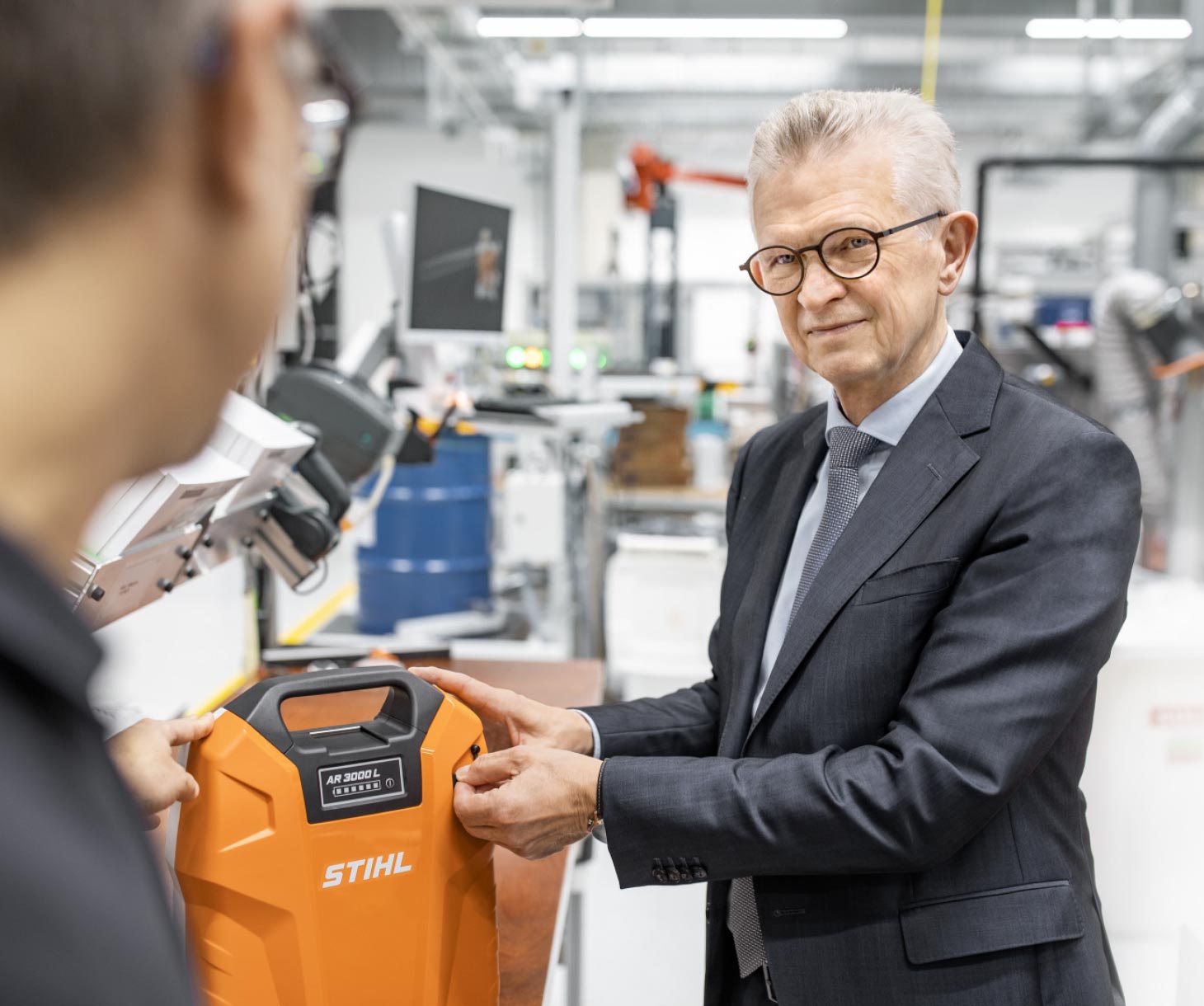
How is STIHL planning to gear up for this future?
Dr. Bertram Kandziora The Executive Board and Advisory Board have identified strategic areas that we are working on as top priorities. For example, in the future we plan to position our product range even more clearly from the brand and customer standpoint, lower the complexity of our model series, and launch new products faster. The worldwide production and logistics strategy will be refined and developed. For example, systems are being implemented to harmonize processes across the entire Group of companies. This will add speed and transparency while also reducing costs. The global administrative, sales and distribution, and marketing organization is being geared even more toward genuine customer needs. To adapt to changes in buyer behavior, especially among customers in the battery segment, we founded STIHL direct GmbH and started building a powerful worldwide e-commerce sales channel that also includes brick and mortar.
All of these areas involve a lot of time and effort across the entire STIHL Group, but they are essential to getting our business ready for the future. STIHL employees are distinguished by their outstanding knowledge, high levels of engagement, and excellent teamwork. Everyone is working together to actively shape the future of STIHL.
